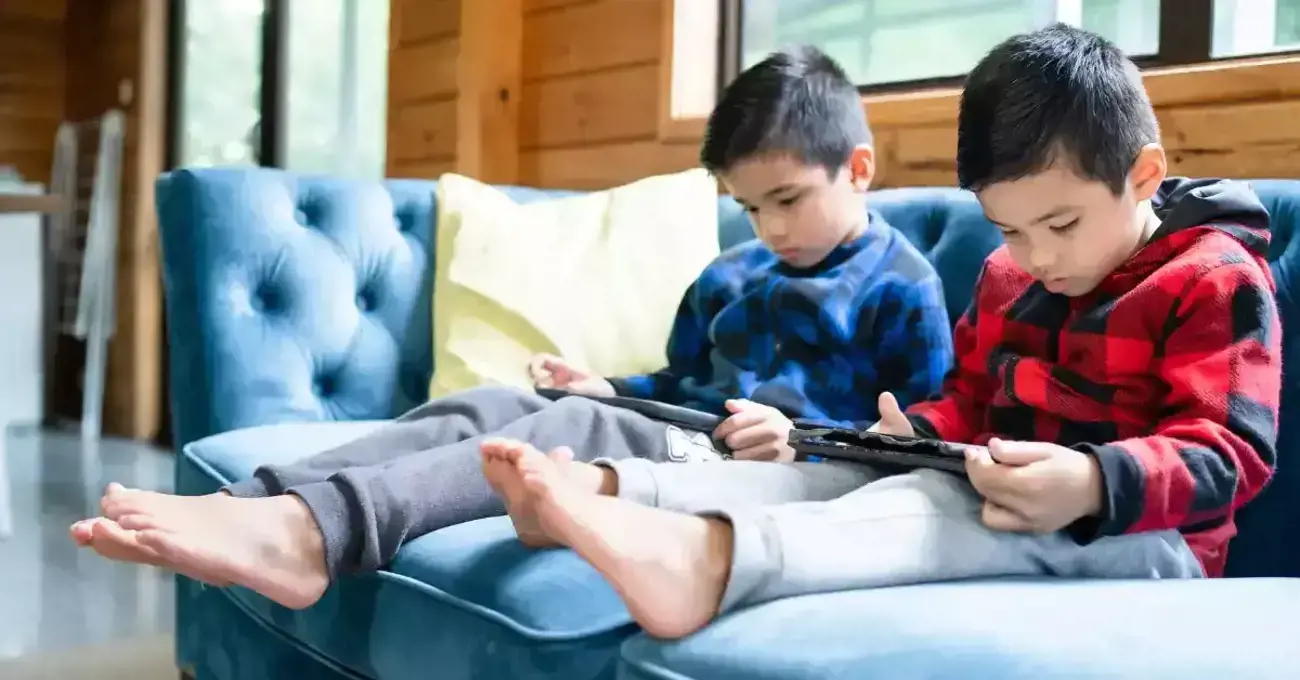The last couple of years have changed us in so many ways, including, let's be honest, how reliant our families have become on screens. For older children, screens have become tools through which they've learned, played, and socialised. For younger ones, electronic media has served as a source of entertainment, keeping them occupied while parents juggle work, homeschooling, and daily tasks.
Yet as we shift back towards a new, healthier ‘normal’, it’s helpful to check in on whether our children’s screen use aligns with official screen time guidelines. This allows us to reset boundaries, limit excessive screen time, and consider implementing screen-free parenting techniques to support our children’s physical, emotional, and social development.
The Great Debate: How Much Screen Time is Too Much?
For years, parents have debated how much screen time is appropriate for children. What age should screens be introduced? Should parents use their phones as distractions? How much is too much for young kids?
While screens are now an integral part of everyday life, excessive use raises concerns about developmental and social impacts. Many parents struggle to balance technology use while ensuring kids engage in physical activity and other offline interactions.
Now, with Covid increasing digital dependence, screens have become a major part of everyday life, used for learning, entertainment, and socialisation. However, balancing technology use is crucial to avoid excessive screen time and ensure children engage in active, real-world experiences.
Understanding Screen Time Across Age Groups
Screen time recommendations vary by age:
- Under 2 years: Experts suggest no screen time, except for video chatting with family.
- 2-5 years: No more than one hour per day, focusing on educational content.
- 5+ years: No more than two hours of sedentary recreational screen time.
That said, not all children respond to screen time the same way. Some kids can turn off the TV easily, while others become irritable after even short periods. It’s important to be guided by your child’s individual reactions rather than strictly adhering to guidelines.
According to the American Institute for Foreign Study, “Most Australian children spend more time on screens than is recommended. Estimates suggest only 17–23% of pre-schoolers and 15% of 5–12-year-olds meet screen-time guidelines.”
The Social Shift: Changing Habits
It doesn’t take long to realise that many children have almost forgotten how to be social. Playdates once involved blocks and dress-up games, but now, many children prefer watching TV or using digital devices instead. This shift means screen time is often spent on passive viewing rather than active, engaging play.
If your child has become reliant on screens for socialising and has lost confidence in real-world interactions, you can help them practice through role-playing social situations or playful interactions with their toys. Young children learn best through play, so guiding them toward real-world experiences is essential.
How, What, Where, and With Whom?
Screen time isn’t just about duration—it’s about how it’s used. Half an hour of video chatting with Grandma is different from half an hour of unsupervised YouTube videos. Consider:
- How? Is your child passively watching or engaging in interactive, educational content?
- What? Are they watching high-quality, age-appropriate content?
- Where? Are screens in communal areas where you can monitor them?
- With Whom? Are they watching alone or engaging in shared screen time with family?
It’s also important to consider when screens are used. An hour spent playing an educational app in the afternoon is less harmful than an hour of screen time right before bed, as children need 60–90 minutes of screen-free time for healthy sleep.
Leveraging Screen Time for Learning
Rather than banning screens altogether, parents and educators can use digital platforms to support learning. Many experts recommend the ‘little and often’ approach for younger children. For example, Reading Eggs suggests 20 minutes a day and completing 1–2 lessons per week.
By integrating screens into education in a structured way, parents can monitor their child’s progress, and educators can use technology to complement face-to-face learning.
Managing Screen Time in Everyday Life
Balancing screen time doesn’t just apply to children—parents should also be mindful of their own digital habits. Studies show that when adults spend significant time on screens, children tend to mimic their behaviour. Setting limits and encouraging outdoor play helps create a balanced approach to technology use.
Strategies to Reduce Screen Time:
- Background Ban: Eliminate passive viewing by turning off background TVs. If noise is needed, play music or a podcast instead.
- Community Viewing: Keep TV watching, gaming, and web browsing in shared spaces to encourage discussion and monitor content.
- Table Talk: Keep mealtime screen-free. Engage kids in conversations, sensory play with food, or storytelling.
- Interactive Screen Time: Engage with your child while they use screens—ask questions about what they’re watching or learning.
- Encourage Alternative Activities: Promote outdoor play, reading, music, and creative activities as alternatives to screens.
- Be a Role Model: Reflect on your own screen use. If you constantly check emails or social media while your child is talking to you, they will likely adopt the same habits.
The Importance of Resetting Boundaries
After years of pandemic-driven screen reliance, now is the time to reassess and reset our children’s screen habits. By setting thoughtful boundaries, ensuring screens are used in productive ways, and fostering real-world social skills, we can guide our children toward a healthier, more balanced relationship with technology.
Ultimately, screens are here to stay, but how we integrate them into our lives determines their impact. With mindful management, we can harness technology to enhance learning while ensuring children develop critical social, emotional, and physical skills for the future.



































